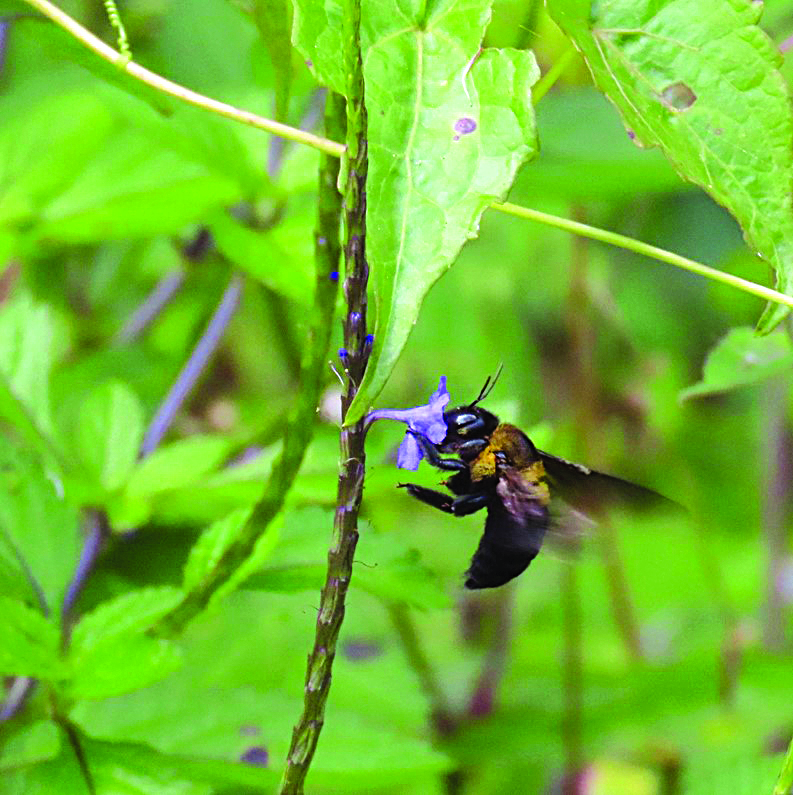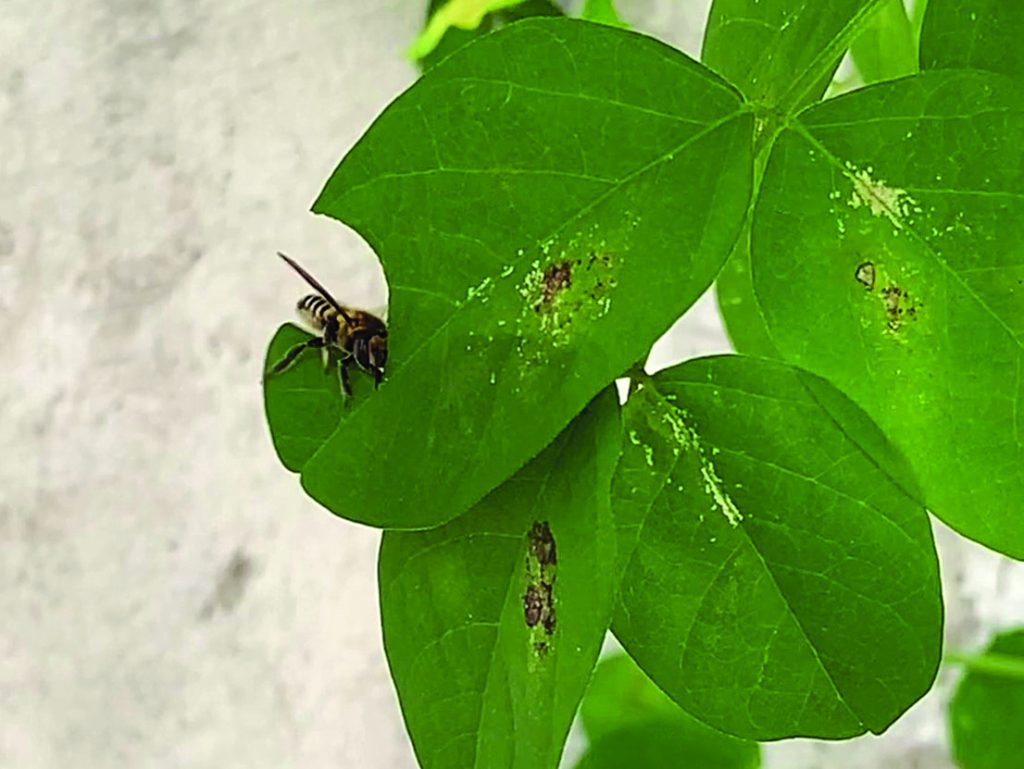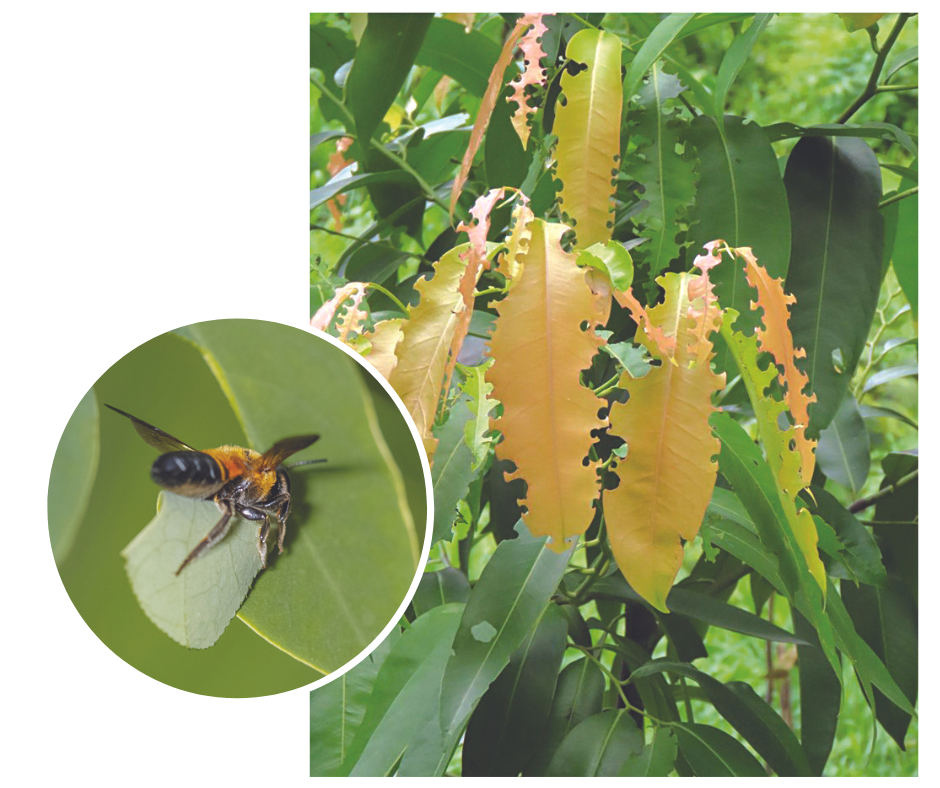During the COVID-19 lockdowns, many people turned to backyard watching to get their nature fix. If you’re the type to have plants in your backyard, you may have noticed Bees visiting flowers blooming in your gardens.
Not all of these Bees look like your typical Honey Bee with yellow and black stripes. Many are solitary Bees, called such because they don’t build a hive to store their honey and don’t have one queen.
Let’s meet some whom you might bump into in your garden!
CARPENTER BEE (Genus Xylocopa)
Carpenter Bees are probably the easiest backyard Bee to see and hear. Carpenter Bees look a lot like what you might imagine as Bumble Bees buzzing around flowers. They have a large black round body with dark colored wings and, if you see them in the sunlight, you’ll notice that the female’s abdomen is an iridescent blue-black or deep purple. Meanwhile, the male Carpenter Bees have yellow or olive-brown stripes that you might spot if they fly close enough to you.
It might seem a bit scary to get close to these busy Bees, but they’re not known to be aggressive.

A male Carpenter Bee drinking from a wildflower. (Janina Castro)
The female Carpenter bee chews tunnels out of wood or branches to create a nest. Oftentimes, she’ll return to this same burrow, expanding it into a network of tunnels.
Some people find the above practice a bit destructive, especially if the nests are made in the foundations of houses. It would help to leave soft wood around your yard so that they would nest in those instead. After all, Carpenter Bees are an essential pollinator for many different kinds of food such as the Brazil nut.
BLUE-BANDED BEE (Amegilla sp.)
If you see a neon blue blur zipping through your garden, chances are you just saw a Blue- Banded Bee (Amegilla sp.)! The females of these solitary Bees use their strong jaws to dig burrows in soft sandstone banks and even mud bricks.
Blue-Banded Bees and Carpenter Bees are also known as buzz pollinators.
Some kinds of flowers hide their pollen. This means that the Bees need to vibrate their flight muscles at the right frequency to get it out of the flower. For the flower, this might mean that they may become highly reliant on buzz pollinators for survival, a great reason to continue protecting wild Bees.

A Blue-Banded Bee flying towards a Makahiya flower (Mimosa pudica). (Janina Castro)
These docile flying jewels create their distinct colors when light reflects off the fur on their bodies, reflecting iridescent blue. If these guys hold still enough while feeding on flowers, you might be able to count their stripes. Males have five blue stripes while females have four.
Male Blue-banded Bees also hold sleepovers every night, sharing an open twig or branch for the night, according to Land for Wildlife.
LEAFCUTTER BEES (Family Megachilidae)
Have you ever seen circles cut out of leaves in your garden? These aren’t caused by caterpillars. These were more likely chewed out by Leafcutter Bees!
Leafcutter Bees are rather docile and will only sting when you handle them, but try not to bother them while they’re hard at work, according to a 2017 article by Nadia Hassani for The Spruce.

A Leafcutter Bee Chewing through leaves for her nest. Photo by Janina Castro
The female solitary Bee uses her strong jaws to chomp small circles out of soft leaves. She carries the leaves to a crevice or a hole in a tree to build the chambers of her cigar-like nest. In each thimble-looking chamber, she’ll lay one egg and leave pollen and honey for the larvae to eat once they hatch.

Holes in leaves left by a Leafcutter Bee. (Janina Castro)
If you see signs of these Bees in your garden, don’t worry! While they may turn your plants into Swiss cheese, these guys are vital pollinators and don’t have any adverse effects on most plants.
In countries where Leafcutter Bees are better studied, they even found that some kinds of food are best pollinated by a Leafcutter, such as alfalfa, which are pollinated by the Megachile rotundata or the Alfalfa Leafcutter Bee.
BEES ARE OUR FRIENDS
Although there is not much research into detailed threats to solitary Bees in the Philippines, some of their more common threats are habitat loss, pesticides, and climate change. Despite this, there are many ways we can give these Bees a leg up!
Planting native flower trees and shrubs, avoiding pesticides in your garden, and leaving some wilder messy parts like old logs and branches are great ways to share our spaces with solitary Bees.






